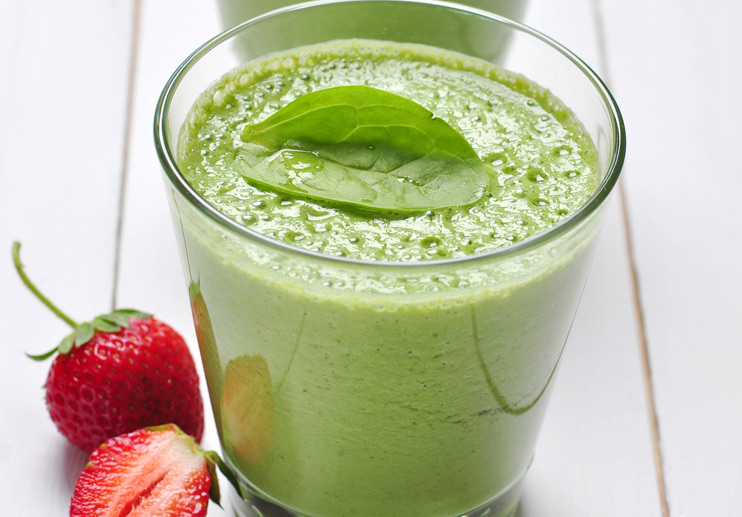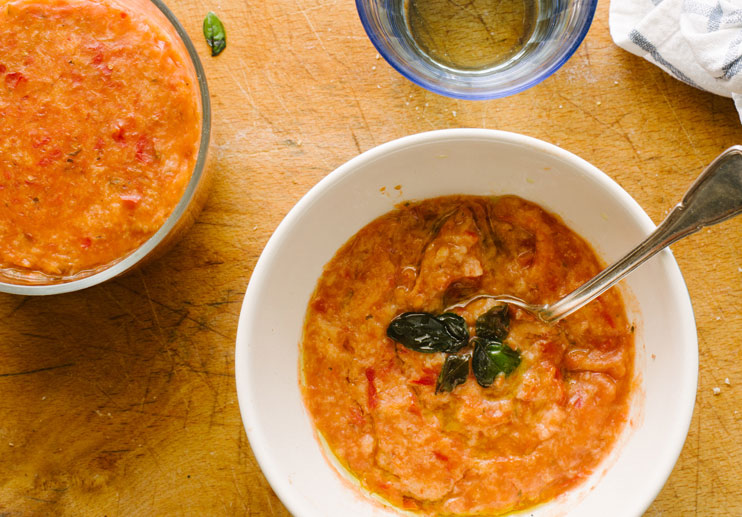Fresh tomatoes usually get all the love, obscuring the fact that canned tomatoes, preserved at their peak in their own juices, are wonderful, too! This soup, though made of humble ingredients, is transformed when drizzled with exquisitely fresh olive oil.
Ingredients
- 2 tablespoons extra virgin olive oil, plus more for drizzling
- Pinch red pepper flakes
- 2 medium cloves garlic, thinly sliced
- 1/2 medium onion, minced (about 1/2 cup)
- One 28-ounce can whole plum tomatoes, crushed by hand, with juices
- 2 sprigs fresh basil, plus torn leaves for serving
- 1/3 pound (about 6 ounces) fresh or stale rustic bread, crusts removed, torn or cut into 1-inch chunks
- 2 cups warm vegetable or chicken stock, plus more as needed
- Kosher salt and freshly ground black pepper
Directions
Step 1
In a large saucepan, heat 2 tablespoons of olive oil over medium heat until shimmering. Add red pepper flakes and garlic and cook, stirring, until the garlic just begins to turn golden. Add the onion and cook, stirring, just until softened, about 5 minutes. Add the crushed tomatoes and their juices, along with the basil sprigs, and bring to a simmer.
Step 2
Stir in the bread. Ladle the stock on top, stirring to combine. Simmer the soup, adding more stock as needed, until the bread is completely softened and custardy and soup has thickened to a porridge-like consistency, about 25 minutes. Season with salt and pepper. Discard the basil sprigs.
Step 3
Divide the soup between four bowls, generously drizzle the soup with olive oil, and grind black pepper on top. Garnish with torn basil leaves and serve.
Serves 4 — Recipe adapted from seriouseats.com




